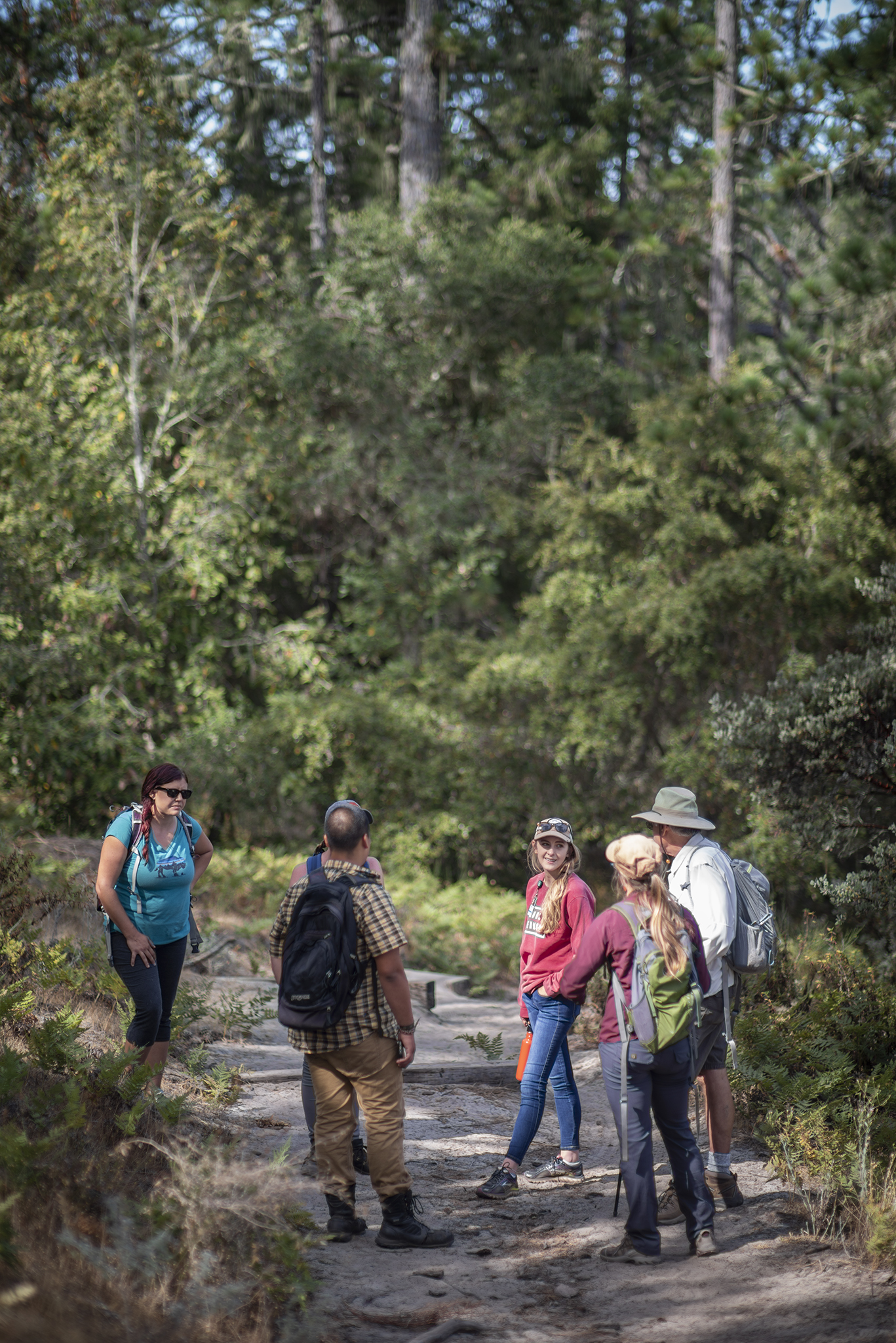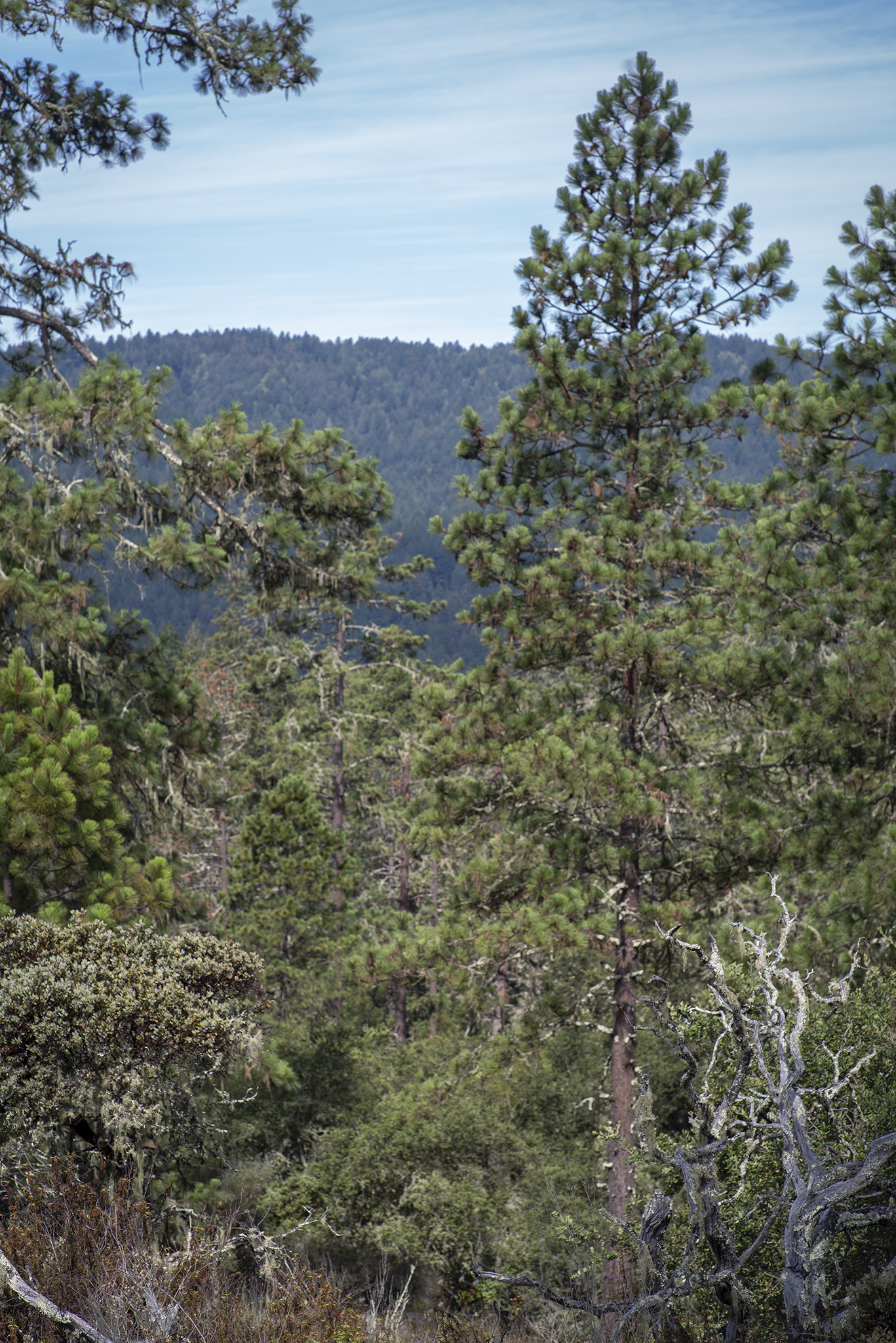The Hunt is On: Searching for Rare Plants in the Golden State
Amy Patten, the California Native Plant Society’s new Rare Plant Treasure Hunt (RPTH) coordinator didn’t venture far to lead her first hunt – Mount Hermon in the Santa Cruz Sandhills is just behind her home. But the spaces closest to us often face great threats, and this holds true for the sandhills, where 40% of the lands have been lost to mining and other development and what remains is threatened by invasive plant species. Despite the threats, the area still supports a unique community of plants and animals very different from the evergreen forests surrounding it. This uniqueness is due to the outcrops of Zayante soils, which have low water and nutrient availability. One of the plants endemic to the sandhills was the target of Amy’s RPTH, the Ben Lomond buckwheat (Eriogonum nudum var. decurrens).
Amy and her co-leader Rebekah Boettcher, a naturalist from the Mount Hermon Association, led seven amazing volunteer botanists in their July search. As the group hiked through the coastal ponderosa pine forest up to the summit of the mountain, they checked areas with bare, sandy soil for their quarry, the umbels of creamy flowers and leafy green basal leaves of the buckwheat. And find them they did: expecting to only find the species in the small, isolated area where they’d been previously observed, the group was excited to find several thousand plants in the area!
Upon reaching the core of the Ben Lomond buckwheat population, the volunteers helped describe habitat characteristics of the buckwheat and the surrounding plant communities, and evaluated threats and disturbances of these rare plants. The volunteer group fanned out in a transect to estimate the size of the population: the larger group of observers was able to find plants that a single surveyor could’ve missed.
As with all of the over 20 treasure hunt outings held this year, Amy’s resulted in a better understanding of a rare species population. Besides reporting a few thousand individual buckwheat plants and expanding the area of its known occurrence, the treasure hunters were able to do the same for Ben Lomond spineflower (Chorizanthe pungens var. hartwegiana), a federally endangered sandhills endemic. The previous occurrence records for these species hadn’t been evaluated in decades and were not accurately mapped.
The lack of knowledge about species is common throughout the state of California. Many rare plant occurrences haven’t been seen in decades, and many corners of the state are yet to be explored. In 2010, CNPS decided to build the RPTH program for their incredible network of volunteers to provide the CNPS Rare Plant Program and California Department of Fish and Wildlife with data that can guide conservation and management for the state’s 2,300 rare species. So, besides leading hunts, Amy coordinates RPTH efforts throughout the state, coordinating with CNPS’s 35 chapters and volunteers, as well as CNPS staff and other researchers, throughout the state.
Gathering a group of California native plant enthusiasts to search for Ben Lomond’s buckwheat endemic expanded not only the knowledge of the species to inform management, but also the local support and appreciation for the species. Besides reporting occurrence information to CDFW and CNPS, Amy can provide the landowners (Mount Hermon Association) with better management for these species. She also has a group of capable volunteers willing to return and tackle the mapping of silverleaf manzanita (Arctostaphylos silvicola) – the dominant shrub of the sandhills that also happens to be a rare county endemic. CNPS will also be back to collect Ben Lomond buckwheat seed, now that they know there are enough plants to make a seed collection without impacting population viability.
CNPS is a volunteer driven organization. Chapter volunteers coordinate meetings featuring educational talks, plan outreach events in their communities, put on native plant sales, and lead field trips. And they are essential to helping CNPS accomplish conservation goals. As the new rare plant treasure hunt coordinator, Amy is excited to engage more of CNPS’s fabulous volunteers and hunt for more of California’s rare plant treasures.
If you’re interested in collecting rare plant data and/or leading field trips with local chapters, visit the CNPS webpage to sign up for their mailing list and fill out a volunteer questionnaire!


